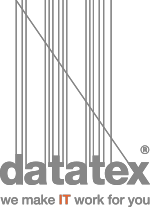Each European citizen consumes 26 kg of textile per year, mainly because of the spreading phenomenon of “fast fashion”. Indeed, our way to consume is deeply influenced by this model in which new styles are constantly designed, creating every year new collections and thus lowering the prices.
After the serious crisis brought by COVID 19, where even the biggest retail chains had to face many difficulties, the whole fast fashion supply chain has to reconsider its market approaches.
In fact, today the clothing system has been undoubtedly very polluting and resource intensive. Meanwhile, it also represents an essential part of our daily life and of the global economy too. It is a matter of fact that there are more than 300 million people employed in the clothing supply chain and this represents the 60% of the whole textile industry.
Despite its economic relevance, it is important to underline that textile industry is based on non-renewable resources, with 93 billion cubic meters of water used annually and a greenhouse gasses production of 1.2 billion tons of CO2.
In the last 15 years we witnessed a huge rise in the production of clothes, with a duplication caused both by the phenomenon of “fast fashion”, and the increase of people who can afford to do shopping. In particular, there is a higher volume of low-quality clothes, unfit for extended reuse which aim to quantity instead of quality.
rise in the production of clothes, with a duplication caused both by the phenomenon of “fast fashion”, and the increase of people who can afford to do shopping. In particular, there is a higher volume of low-quality clothes, unfit for extended reuse which aim to quantity instead of quality.
Nowadays there are many initiatives that focus on the reduction of the pollution produced by the current system of textile production, but they look at the effects not at the causes. Quite the contrary, a circular economy approach foresees the prolonged use of clothes and a lower need of using recycling procedures to reduce their polluting impact.
In this new type of textile economy, clothes and fabrics have a higher quality in order to extend their use by consumers and allow them to re-enter the economy after their usage, thus avoiding their disposal. Through the promotion of a repeated use of the same clothes, we get a lower impact on the environment than any other type of fabric recycling.
The path to follow in order to grant a durable value, deals with the necessity to offer high quality garments with a long- term durability.
The production of fabrics to create clothes plays an important role, and thanks to Datatex Module NOW – QUALITY, it is possible to assure a high level of product quality, running runs health quality checks in a specific moment, very quickly both on raw materials and during the production process. All the record values coming from the tests are recorded so that it is easier to manage products’ trends, offering products with an ever-growing quality level.




